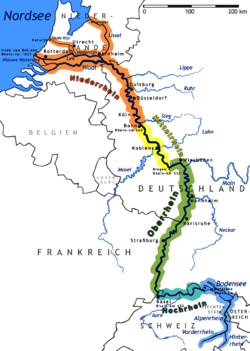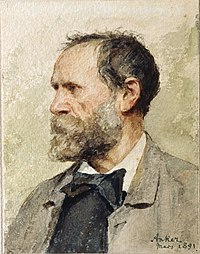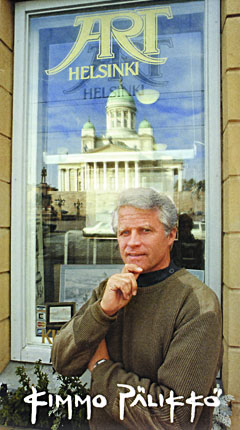Der Rhein
Pocztówka przedstawia romantyczna stronę rzeki Ren.
The postcard shows the romantic side of the river Rhine.
 |
| Bieg Renu |
Ren (fr. Rhin, niem. Rhein, nid. Rijn, ret.Rein) – jedna z najdłuższych rzek w Europie. Długość – 1233km.
Wypływa z Alp Szwajcarskich (gdzie ma swoje źródło), przez Jezioro Bodeńskie, dalej na północ tworząc granicę między Francją a Niemcami. Ren uchodzi do Morza Północnego na zachód od Rotterdamu w Holandii.
Nazwa rzeki pochodzi od protoindoeuropejskiego rdzenia reie-, oznaczającego "poruszać się, płynąć", który jest również podstawą takich słów jak polskie rzeka czy angielskie river. Podobną etymologię ma m.in. rzeka Reno we Włoszech.
Nad Renem leżą m.in. Konstancja, Bazylea, Strasburg, Karlsruhe, Spira, Wormacja, Mannheim, Ludwigshafen, Wiesbaden, Moguncja, Koblencja, Bonn, Kolonia, Duisburg, Arnhem, Utrecht, Rotterdam.
The Rhine (German: Rhein; Dutch: Rijn; French: Rhin; Romansh: Rain; Italian: Reno; Latin: Rhenus; West Frisian Ryn) is one of the longest and most important rivers in Europe, at about 1,232 km (766 mi), with an average discharge more than 2,000 m3/s (71,000 cu ft/s). The name of the Rhine derives from Gaulish Renos, and ultimately from the Proto-Indo-European root *reie- ("to move, flow, run"), which is also the root of words like river and run. The Reno River in Italy shares the same etymology. The spelling with -h- seems to be borrowed from the Greek form of the name, Rhenos, seen also in rheos, stream, and rhein, to flow. The Rhine and the Danube formed most of the northern inland frontier of the Roman Empire and, since those days, the Rhine has been a vital and navigable waterway carrying trade and goods deep inland. It has also served as a defensive feature and has been the basis for regional and international borders. The many castles and prehistoric fortifications along the Rhine testify to its importance as a waterway. River traffic could be stopped at these locations, usually for the purpose of collecting tolls, by the state that controlled that portion of the river.




.svg/120px-Blason_ville_fr_Saint-Tropez2_(Var).svg.png)




























.svg/120px-Blason_ville_fr_Avignon_(Vaucluse).svg.png)
